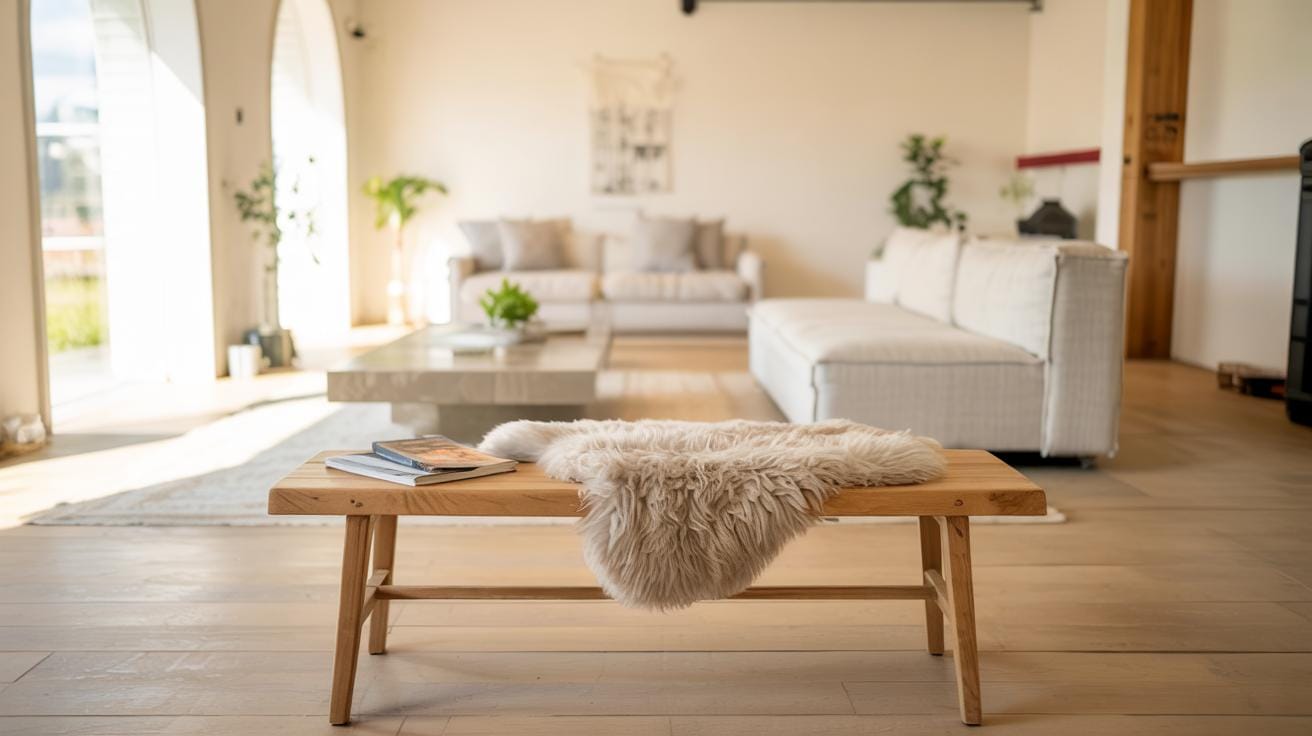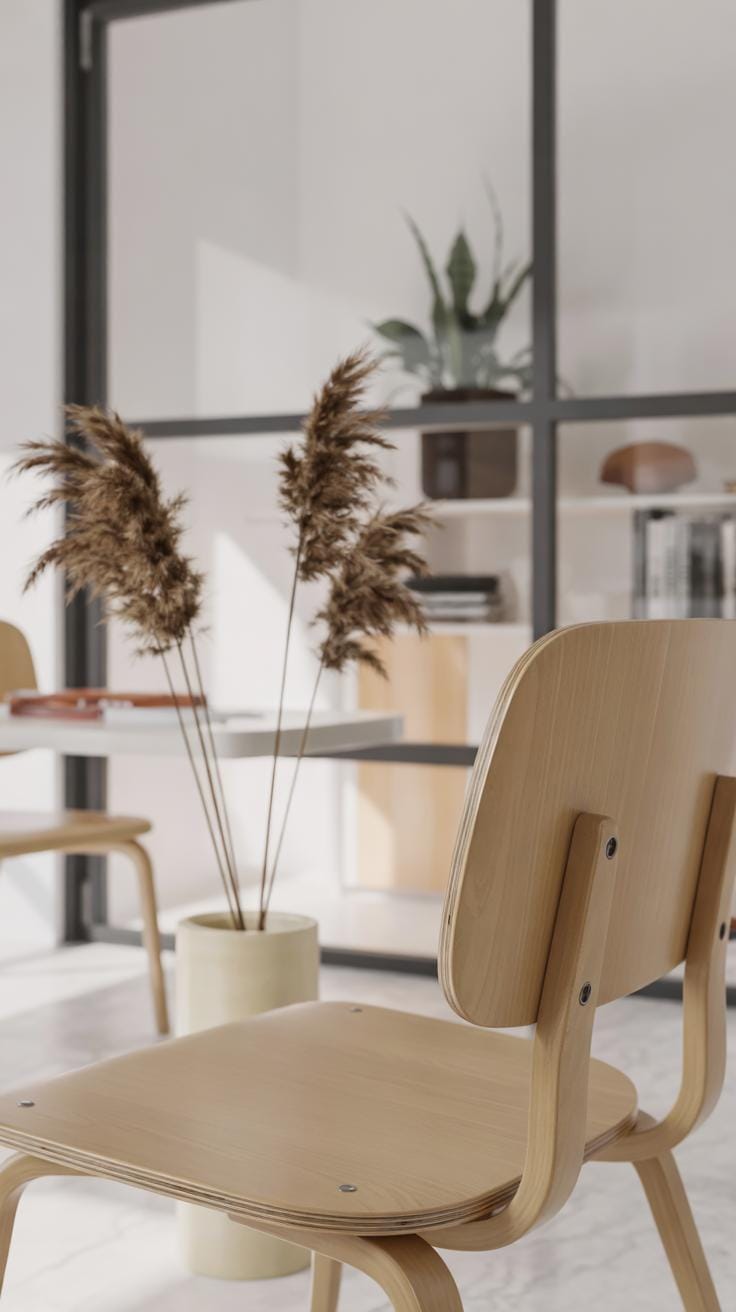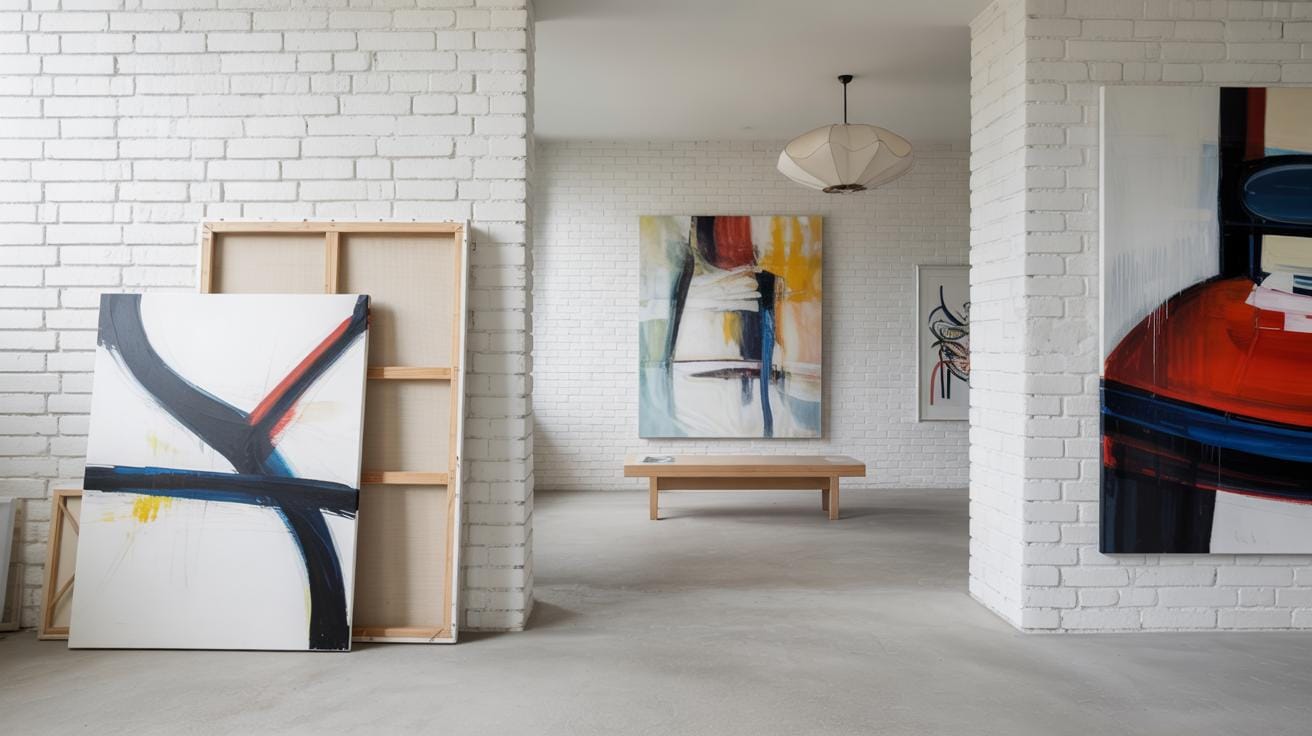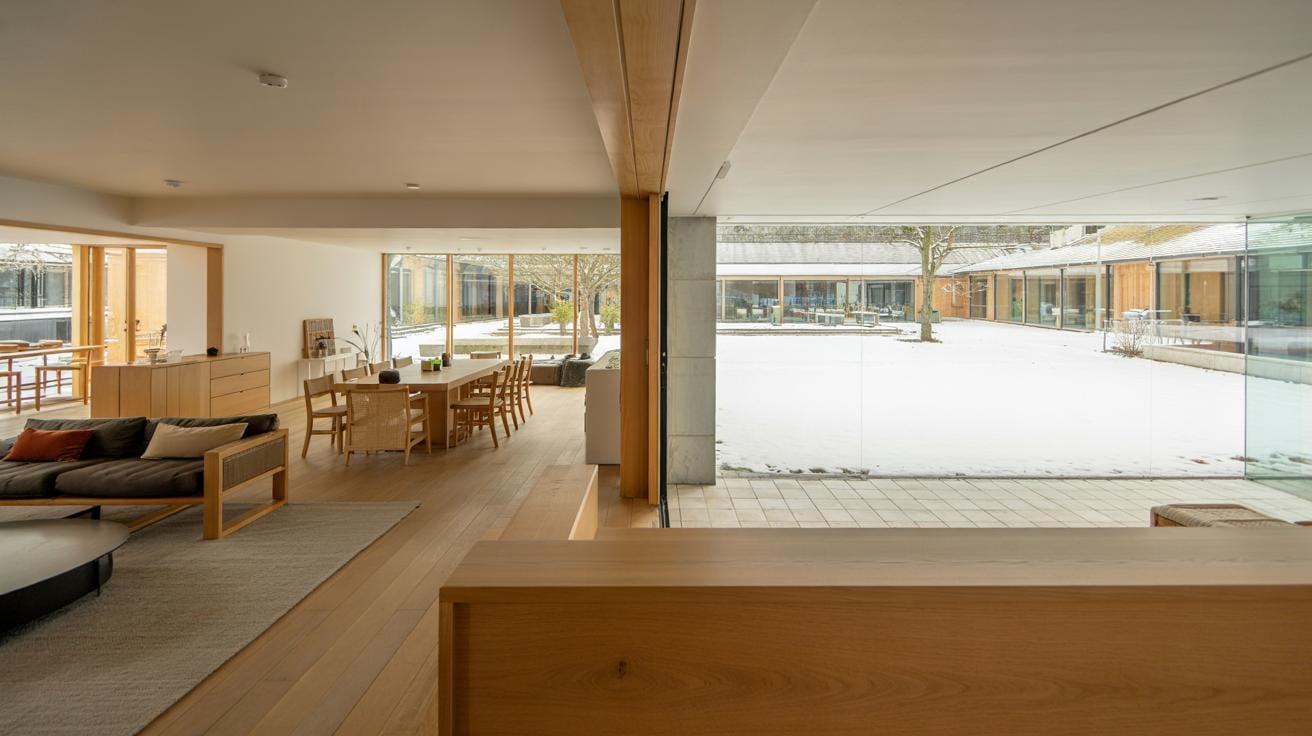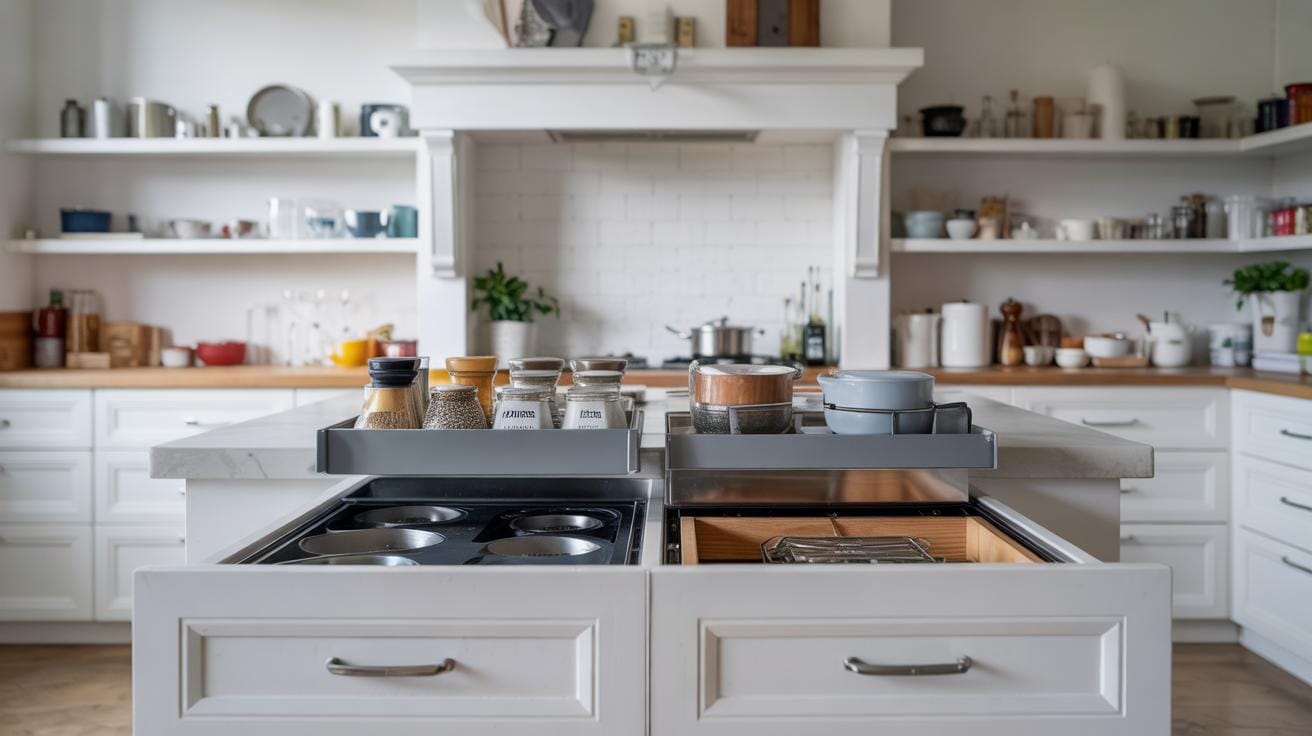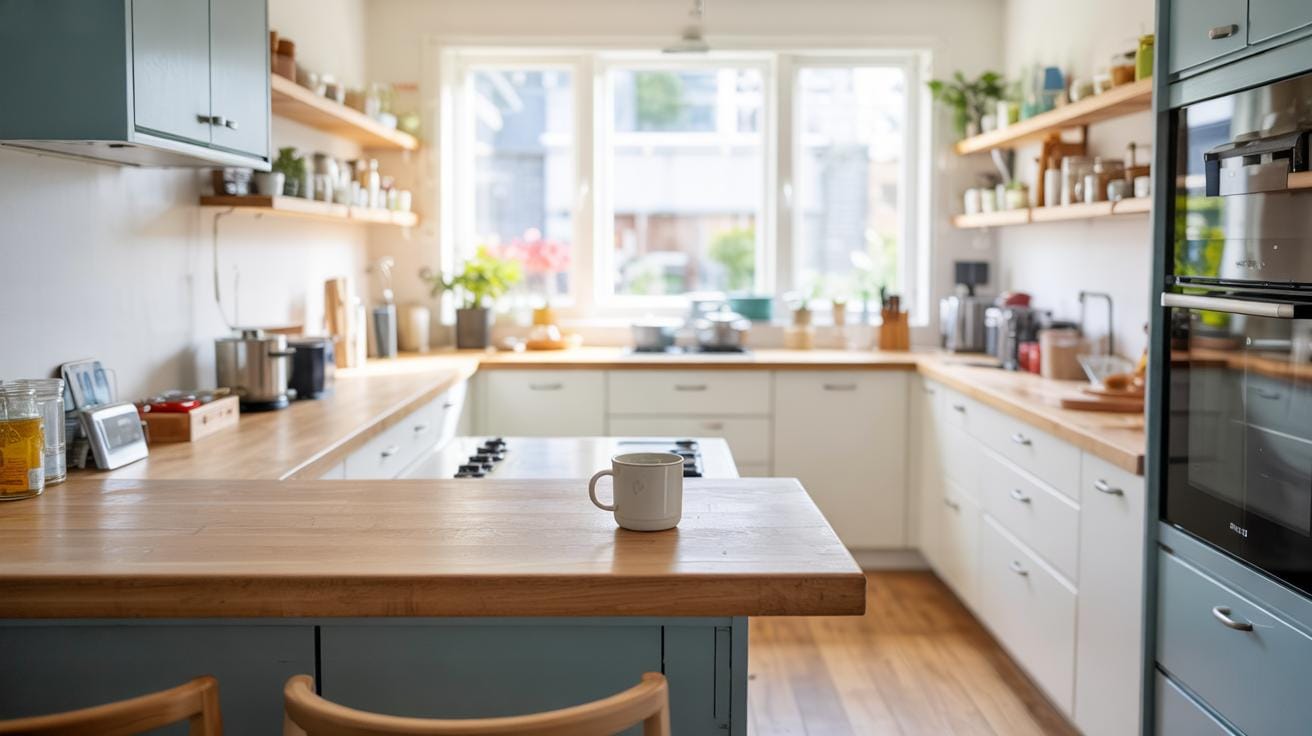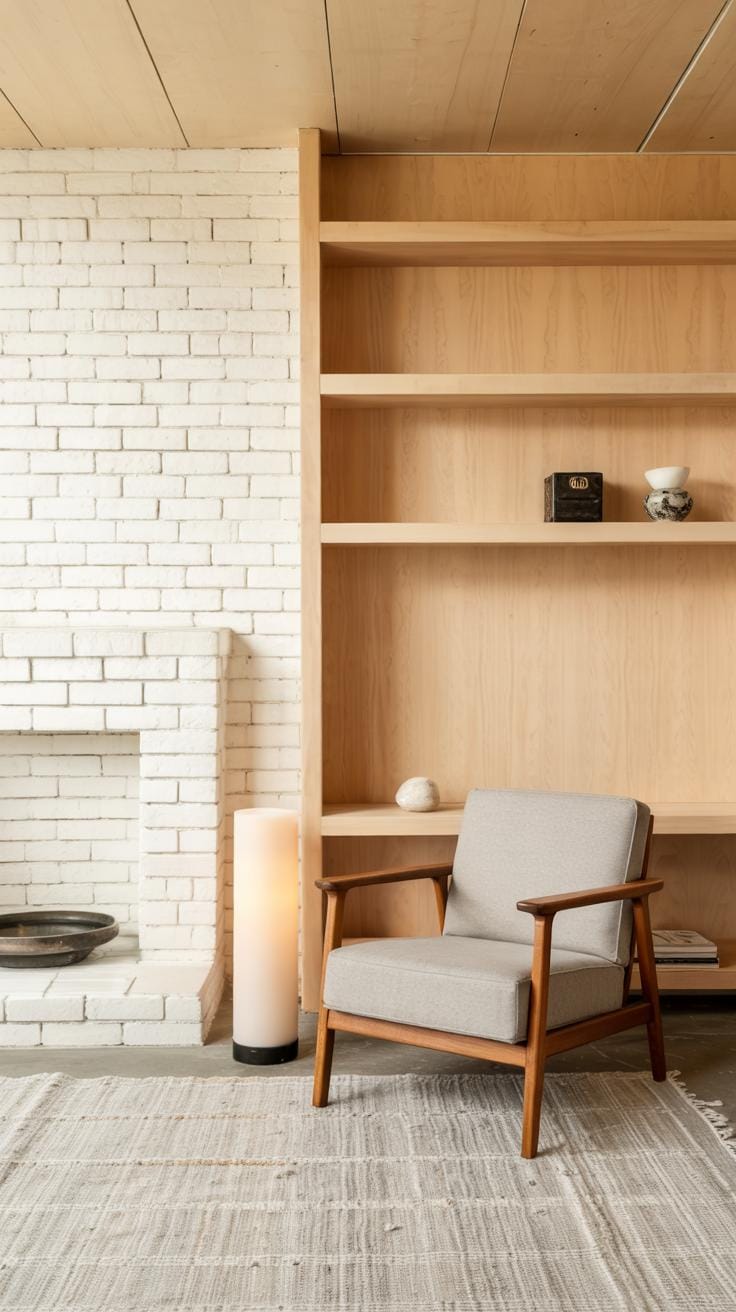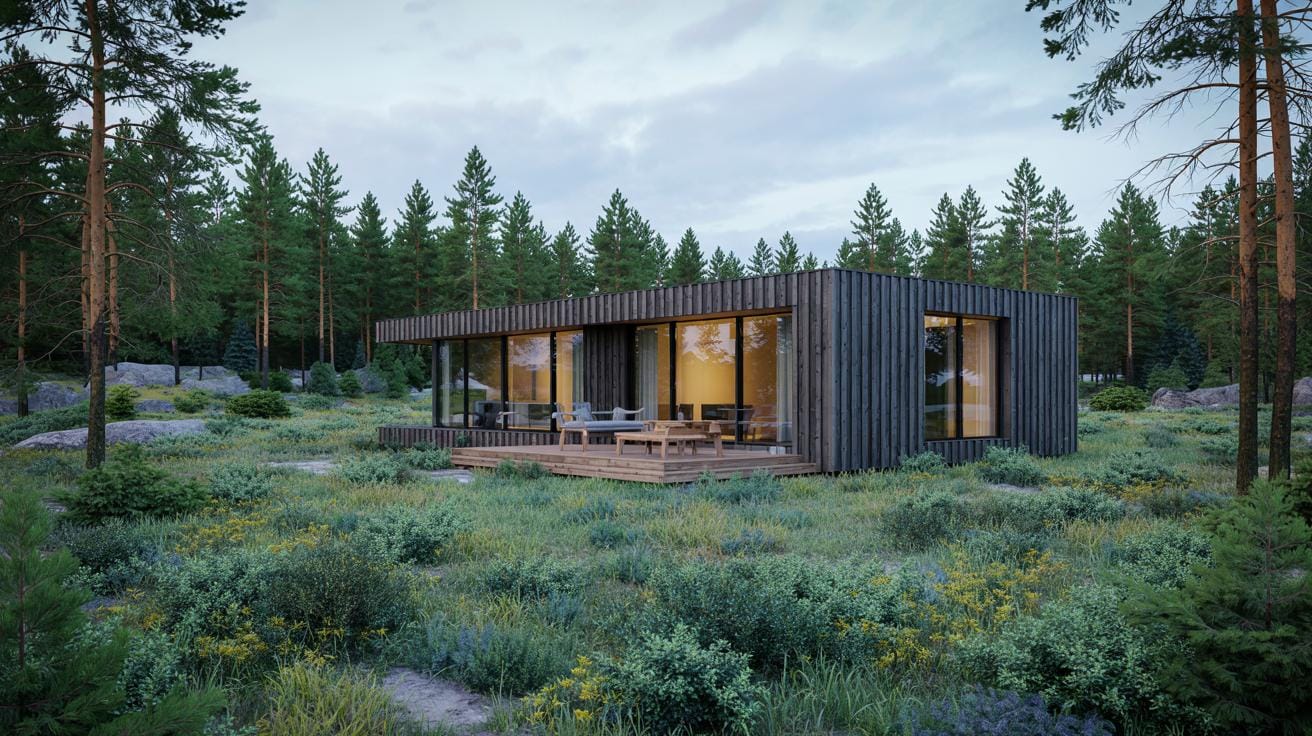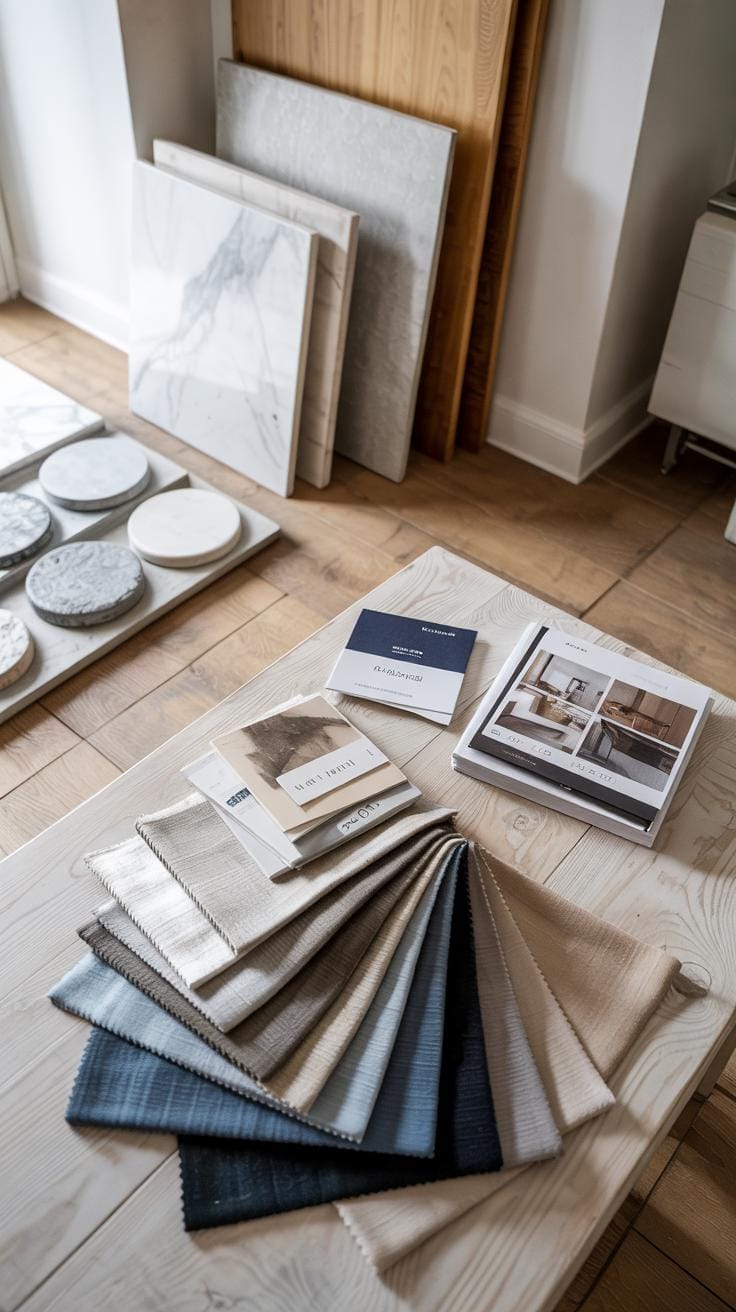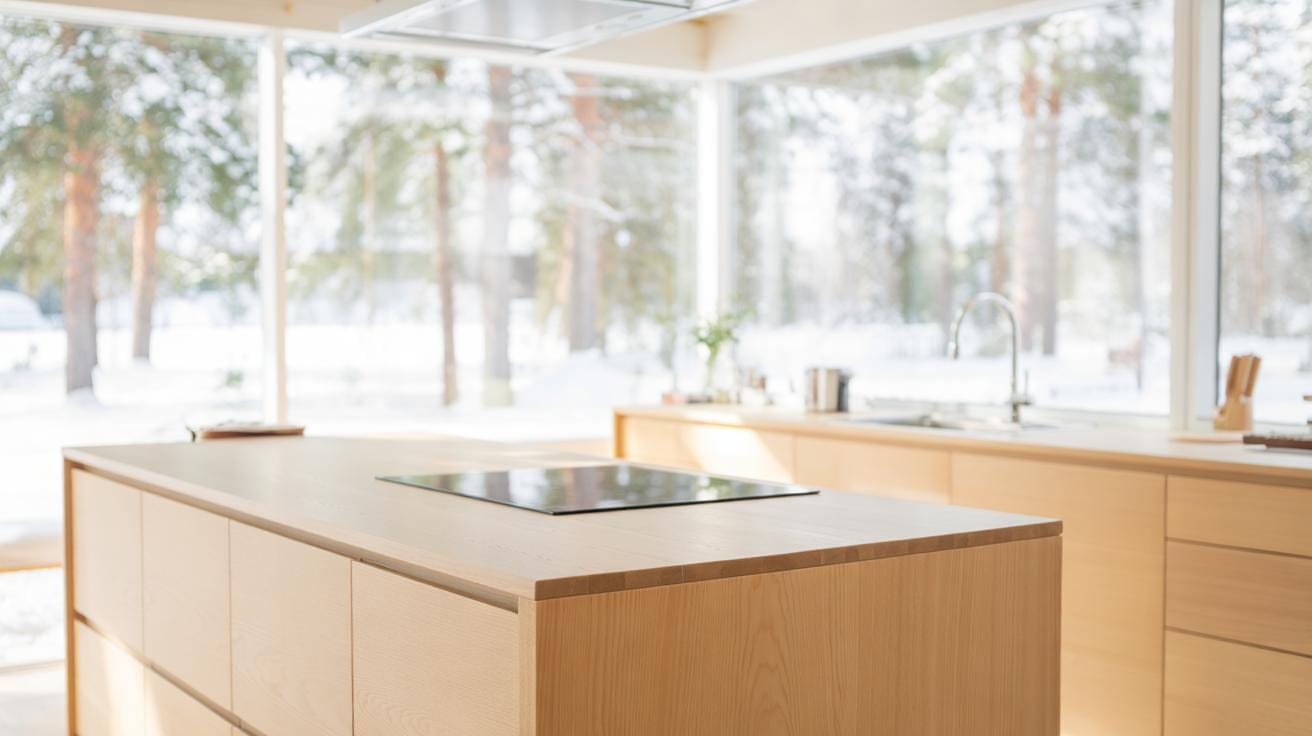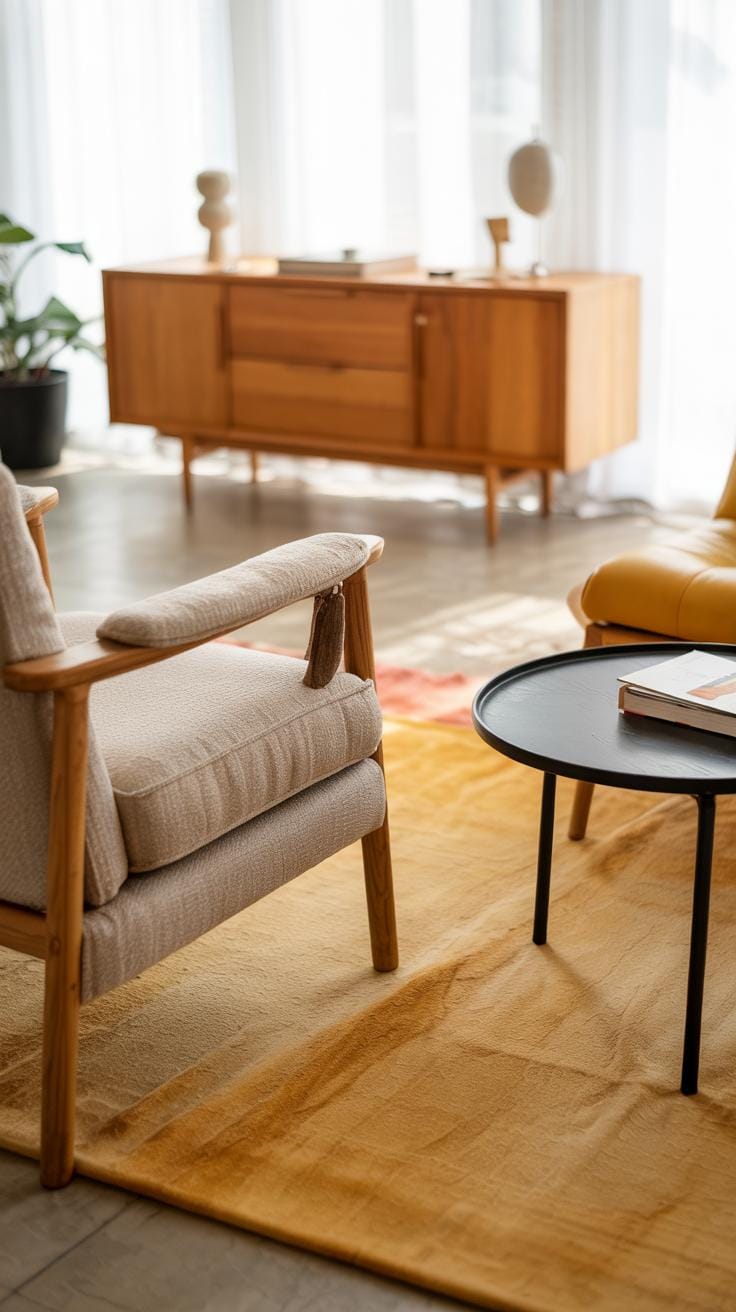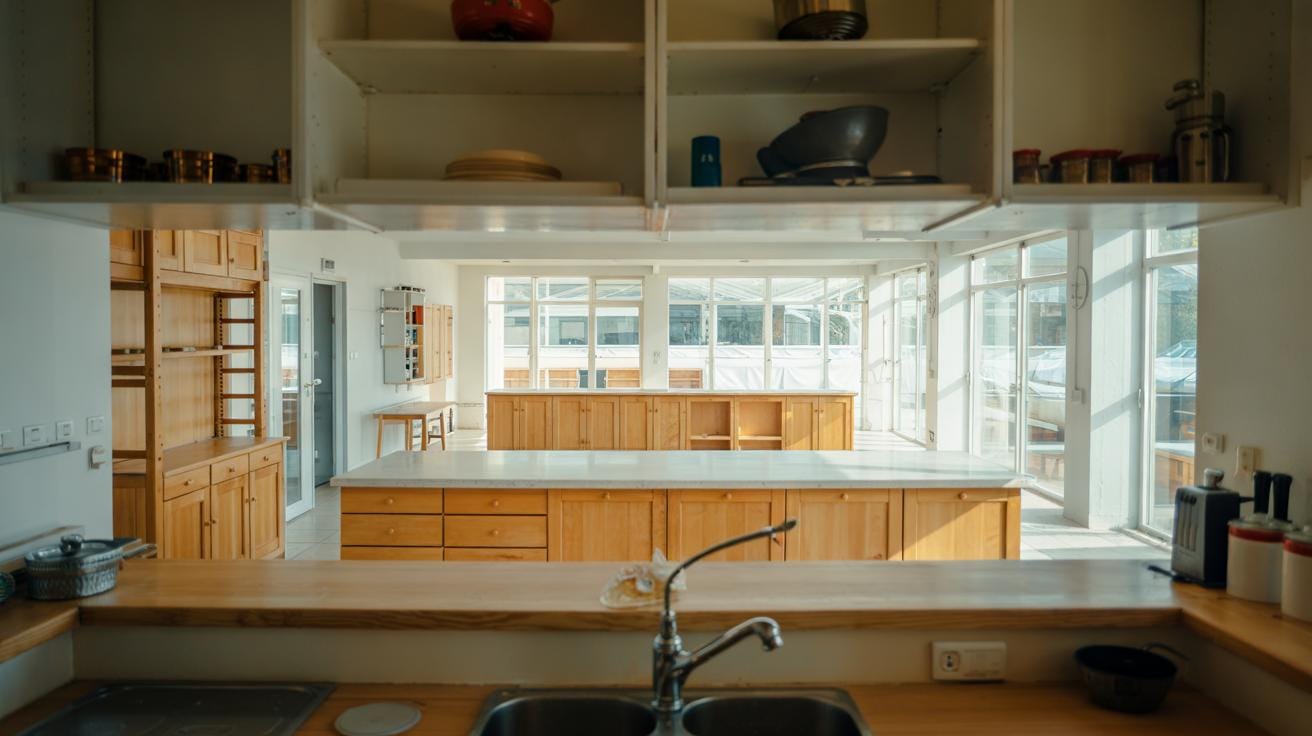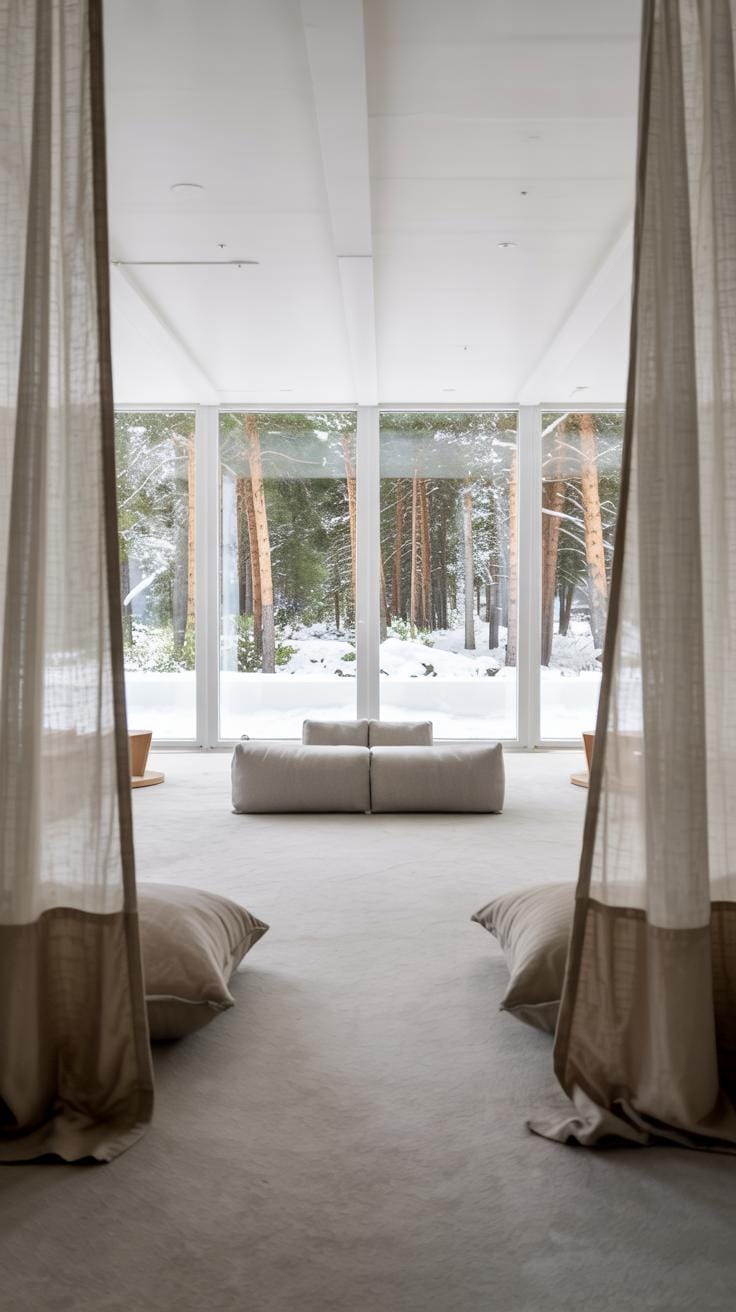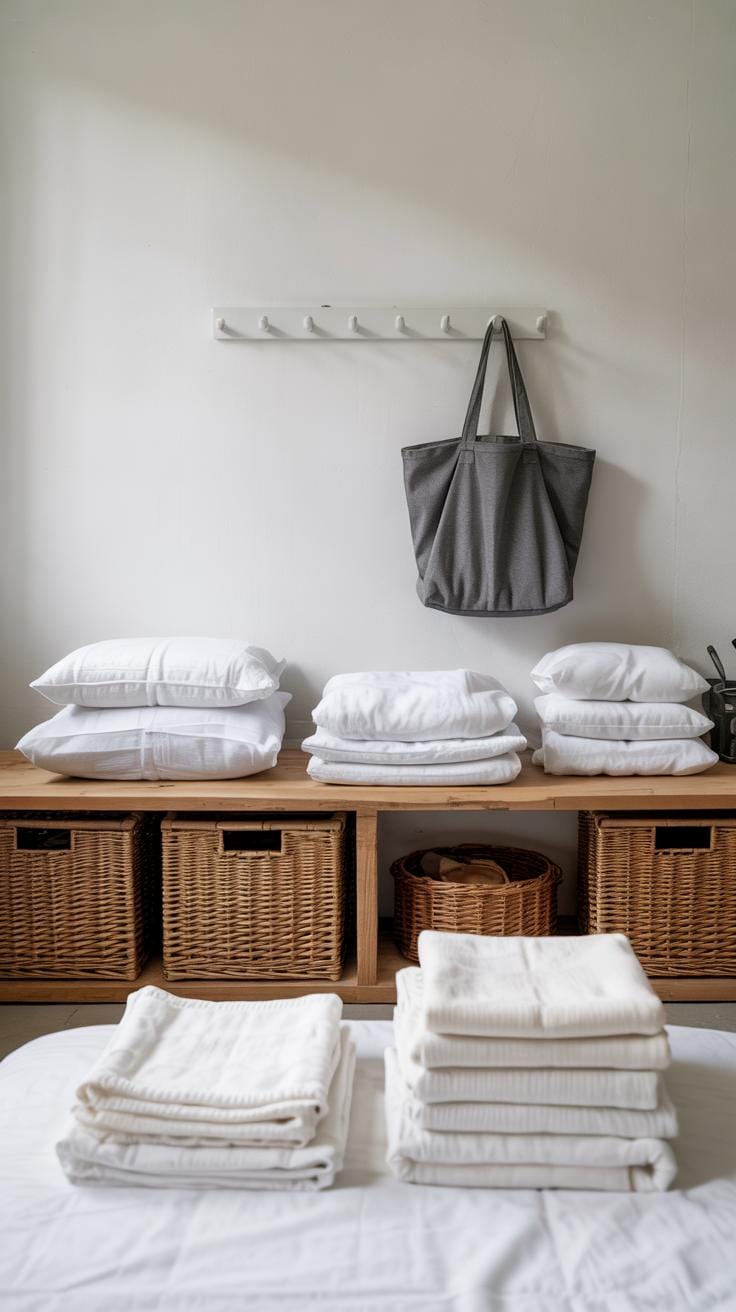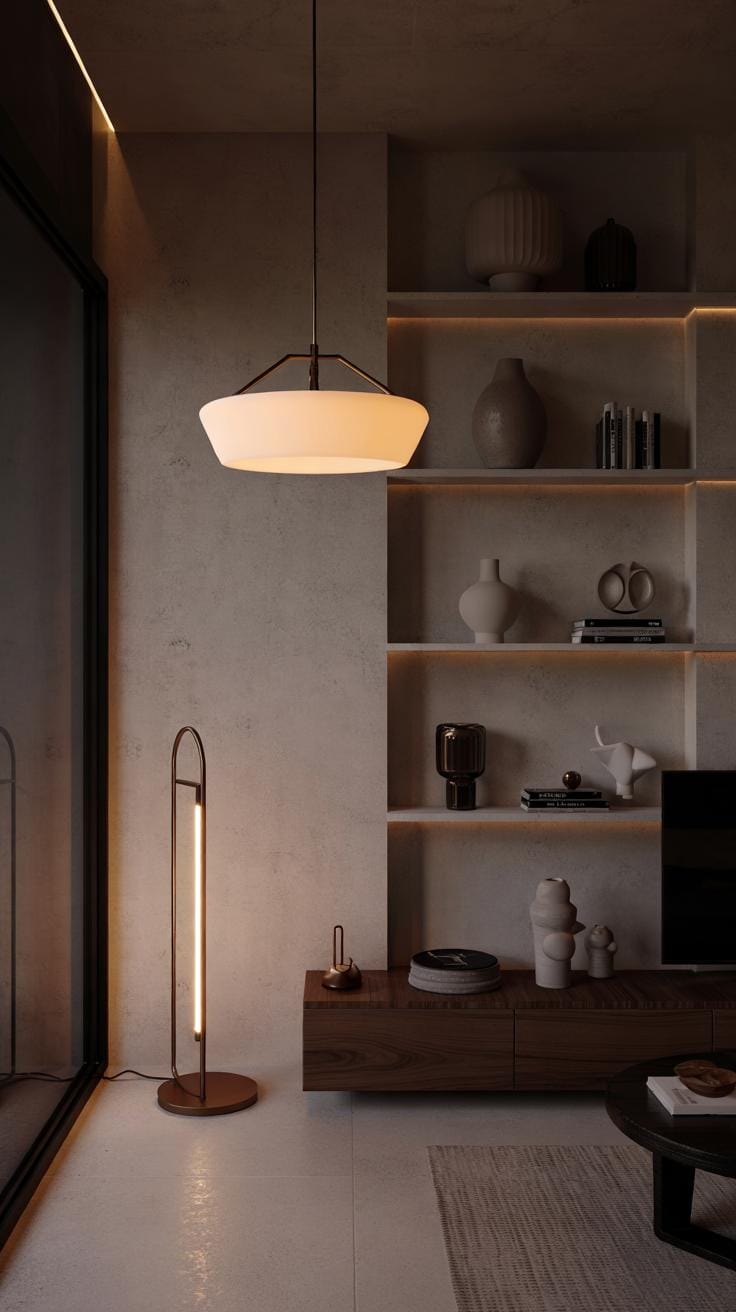Introduction
Scandinavian interior design stands out for its emphasis on simplicity, functionality, and clean lines. It brings a calm and organized feel to homes through thoughtful furniture, practical layouts, and natural light. The style started in the Nordic countries and celebrates natural materials and craftsmanship. When blended well with minimalist principles, it creates spaces that feel open, bright, and uncluttered, perfect for anyone seeking peace and clarity in their environment.
This article breaks down the essentials of combining Scandinavian and minimalist styles. We explain how you can design your own home with these ideas in mind. Are you looking for practical tips on using color, furniture, and decor smartly? You will find steps to create a space that feels spacious yet warm. These design choices focus on purpose and reduce distractions, helping you live with less and enjoy more. Understanding this approach might change how you see your home today.
Understanding Scandinavian Design
Scandinavian design began in the early 20th century in countries like Sweden, Denmark, Norway, and Finland. It grew from a need to create interiors that were both practical and beautiful. The movement values simplicity and avoids unnecessary ornamentation, focusing on function over form.
Your space should feel open and easy to use. Natural materials like wood, leather, and wool play a key role, bringing warmth and texture to rooms. Light is another main feature, used to brighten spaces during long, dark winters.
Craftsmanship matters a great deal. Makers pay close attention to quality and detail. Iconic furniture pieces, such as the Arne Jacobsen Egg Chair or Hans Wegner’s Wishbone Chair, show how form and function blend perfectly in Scandinavian design.
Key Features of Scandinavian Interiors
Scandinavian interiors use clean lines and simple shapes. These elements keep your space uncluttered and easy to decorate. Light colors like white, soft grays, and pastels open up rooms and reflect more daylight.
Wood is a core material, often found in floors, furniture, or ceiling beams. It adds a natural feeling to your home. Daylight is very important. Large windows or sheer curtains help bring in sunlight, which lifts the mood and supports wellness.
Everything works together to create calm. When you enter a Scandinavian room, it should feel welcoming and restful. How do you make your space feel like this? Focus on natural light, soft colors, and simple furniture that pieces together with ease.
Cultural Roots and Influence
Nordic culture and climate shaped Scandinavian design deeply. The long, cold winters and short daylight hours encouraged a design style that creates warmth and comfort. Homes became places you could relax and recharge.
Minimal clutter came from needing clear, practical spaces. Too many objects or decorations would make a room feel cramped and heavy. Instead, simplicity helps you focus on what matters.
Cozy elements, like soft textiles and layered lighting, balance out the simplicity. These small touches bring warmth and personal comfort. Think about your local weather and lifestyle. How can your space reflect comfort without crowding it with things?
Minimalism as a Design Approach
Minimalism started as an art and design movement focused on removing all non-essential elements. It aims to bring out the true purpose of objects by concentrating on simple shapes and pure function.
The idea is to strip away anything that distracts from the core form or use. Minimalism does not ask for decoration or clutter. Instead, it highlights clean lines, open spaces, and strong purpose.
You might ask, how does this look in daily life? Think about a chair built only for sitting—no extra frills or patterns. This shows how minimalism favors honesty in design over complexity or excess.
Minimalism encourages you to value quality over quantity. When you focus on essentials, every piece earns its place and tells its own story.
Core Principles of Minimalist Design
Minimalist design works by reducing visual chaos around you. It uses basic shapes like squares, circles, and straight lines to keep things clear and easy to understand.
You will often see limited colors in minimalist spaces, such as white, black, and natural tones. These colors reduce distractions and create calmness in any area.
Each object has a purpose. You ask yourself: does this item serve a need? If the answer is no, it should go. Minimalist design asks you to respect the space and avoid waste.
Keep things functional. For example, instead of many decorative cushions, choose one comfortable pillow that supports your back. This helps maintain peace and usefulness.
Minimalism in Interior Spaces
Minimalist interiors rely on empty space as much as on furniture. Space allows light and air to flow freely, making rooms feel open and inviting.
Decoration stays limited and intentional. You won’t find walls crowded with pictures or shelves filled with knick-knacks. Instead, a single artwork or a smooth wooden vase can stand out.
Furniture choices focus on simple forms and durability. For instance, a sleek wooden table with clean edges becomes a statement without overcrowding the room.
You can create balance by arranging only what you need and removing what you don’t. This method helps you enjoy each corner without feeling overwhelmed.
How Scandinavian and Minimalist Styles Align
Both Scandinavian and minimalist designs focus on simplicity and usefulness. They remove anything unnecessary, so every item has a purpose. This creates rooms that feel calm and uncluttered.
These styles share a love for clean lines and straightforward layouts. They avoid loud patterns or busy decorations. Instead, they use space wisely and let natural light play a key role in brightening the room.
When combined, these approaches help you build living spaces that feel balanced and relaxing. They ask you to think about what matters most and keep only what serves a function. How might your home change if you focused on less but better?
Shared Values in Design
Both design styles put function first. Anything that doesn’t serve a clear purpose is left out. This keeps rooms tidy and easy to navigate. You get more room to move, think, and breathe.
Natural materials like wood and linen appear frequently. These textures add warmth without clutter. Neutral colors such as white, gray, and beige help set a clear and calm mood.
Clarity and order come from this mix of simple shapes and natural touches. You don’t feel overwhelmed by furniture or accessories. This keeps your mind clear and your space inviting.
Combining Strengths
Using both styles together increases natural light and opens up spaces. Scandinavian design’s focus on bright, airy rooms pairs well with minimalism’s clean, open layouts. This makes your home feel larger and more welcoming.
Comfort remains key. Soft textiles and cozy lighting balance minimalism’s sparseness. The result feels elegant without coldness. You enjoy a warm, inviting space that works well for everyday living.
How will you blend space, light, and comfort in your own home? The harmony between these styles lets you create a peaceful retreat that fits your life perfectly.
Choosing Colors and Materials
Your choice of colors and materials shapes the feel of a Scandinavian minimalist home. Focus on neutral tones to keep spaces calm and open. Natural textures bring warmth without cluttering the clean design. Think beyond paint and consider what materials touch your skin or appear in your daily view. How can you use simple colors and textures to invite both peace and comfort?
Light colors help you do just that. Whites, soft grays, and pale pastels reflect natural light and make rooms feel larger. These hues reduce distractions and create a quiet background for your furniture and décor. Imagine a wall painted in a soft dove gray paired with white trim—it feels fresh but subtle. Such palettes allow daylight to highlight every corner, enhancing your home’s airy look.
Natural materials add necessary depth to minimalist spaces. Choose wood with a clear finish to show its grain, like pale oak floors or pine accents. These elements bring organic shapes and warmth into sterile settings. Wool blankets and linen curtains introduce textures you can see and feel, preventing rooms from feeling cold. How does touching wood or linen alter your sense of comfort in a room?
Furniture Choices that Reflect Both Styles
Selecting furniture for a Scandinavian interior with a minimalist flair means focusing on clean lines and practical use. Choose pieces with simple shapes that avoid excessive decoration. Think straight legs, smooth surfaces, and basic geometric forms. These designs make your space feel calm and uncluttered.
Prioritize furniture that serves a clear function. For example, a simple wooden chair that offers comfort without extra fluff fits both styles well. Look for materials like light wood, leather, or metal that age well and fit a neutral color palette.
Ask yourself: Does this piece serve a purpose without crowding the room? If the answer is no, it likely doesn’t fit in a Scandinavian minimalist space. When shopping, focus on quality and durability as well to ensure your furniture lasts and stays beautiful over time.
Designing with Function
Function drives the design choices in both Scandinavian and minimalist interiors. Furniture should go beyond aesthetics. Multi-use pieces help you make the most of small spaces. For instance, a bench with hidden storage or a fold-out table saves room and adds convenience.
Ergonomic design matters too. Comfortable seating and surfaces that suit your body reduce strain and improve how you use the space. Avoid furniture with unnecessary details like heavy carvings or ornate handles. These add visual noise and distract from the room’s simplicity.
What activities do you need your furniture to support? Choosing items with clear, purposeful functions improves your daily routines and keeps your space relaxing. It’s about making your home work for you.
Iconic Scandinavian Pieces
Some famous Scandinavian furniture captures the balance between simple beauty and comfort perfectly. The “Wishbone Chair” by Hans Wegner is one example. Its curved back and natural wood create an elegant but functional seat.
The “Poäng Chair” from Ikea uses a bentwood frame and soft cushions to combine durability with comfort. Another classic is Alvar Aalto’s “Stool 60,” a simple, stackable three-legged stool that works in almost any space.
These pieces show how thoughtful design can last for decades while fitting minimalist, functional homes. Have you considered including a timeless piece like these in your own space? They can anchor your room and inspire your other choices.
Maximizing Natural Light
Natural light stands at the core of Scandinavian interiors. It shapes the room’s atmosphere and helps define the clean, airy feel you want to achieve. Position large windows to face south or southeast to catch the sunlight during the day, bringing in a steady flow of brightness. Consider floor-to-ceiling windows if possible; they create an open connection between inside and outside, enhancing the sense of space.
Placing mirrors opposite windows boosts light reflection and spreads it across the room. Using simple framed mirrors in plain designs matches the minimalist touch while helping the space feel larger and airier. Ask yourself where the sun travels in your space—what walls can safely hold mirrors without cluttering the design?
Think about window treatments. Avoid heavy drapes that block light. Instead, allow sunlight to enter freely so your Scandinavian interior can fully benefit from daylight’s positive impact.
Benefits of Daylight
Sunlight does more than brighten a room. It directly influences your mood and energy levels. When daylight fills your home, it helps reduce stress and boosts focus. This effect fits well with the Scandinavian goal of creating a calm and inviting space.
Daylight also enhances architecture and décor details. White walls and natural wood stand out more clearly under natural light, revealing their textures and colors in their true form. Reflect on how your space feels on a sunny morning compared to a cloudy afternoon. Can you use natural light to emphasize your favorite design elements?
Practical Light Enhancements
Sheer curtains work well to filter sunlight softly while preventing glare. They add privacy without sacrificing brightness. Choose light colors like white or pale gray to keep the look fresh and minimal.
Reflective surfaces, such as glossy tiles, metal fixtures, or glass accessories, bounce light further into the room. Place these items thoughtfully near light sources to amplify their effect. Clear glass tables or a polished wooden floor can subtly increase the overall brightness without overwhelming the space.
Consider small adjustments like painting walls in light tones or choosing furniture with smooth, reflective finishes. These practical moves can raise your room’s light levels and maintain the balance between Scandinavian simplicity and minimalist elegance.
Organizing and Decluttering
Maintaining a tidy Scandinavian interior means focusing on removing unnecessary items. Keeping only what you need helps your space stay open and calm. Look closely at each possession and ask if it serves a purpose or brings you joy. If the answer is no, let it go.
Minimalism thrives on clear surfaces and simple layouts. Avoid overcrowding shelves or countertops with too many objects. After clearing, try to find a fixed place for everything. This makes it easier to keep rooms neat every day.
Storage plays a big role in keeping clutter out of sight. Consider smart storage solutions that blend with your design. When everything has a spot, you reduce distractions and make your home easier to clean. Can you find ways to store items that don’t add visual noise?
Smart Storage Ideas
Built-in storage is perfect for Scandinavian homes. Cabinets integrated into walls don’t take extra space and keep items hidden. They offer a clean look without sacrificing function. Look for designs with simple doors that blend with your walls.
Hidden compartments in furniture also help. A bench with storage inside or a coffee table with drawers saves room and keeps items out of sight. Furniture that serves two purposes cuts clutter and gives you more freedom to design.
Think about things you can fold away or tuck behind closed doors. These choices keep open areas feeling spacious and uncluttered. How can you combine daily comfort with clever storage?
Keeping Only What Matters
Start by sorting your belongings into groups: keep, donate, or toss. Focus on items used regularly or those with personal meaning. Ask yourself if each piece adds value to your life or space.
Try limiting your possessions in each category. For example, keep only a few dish sets or decorative objects. This forces you to choose what’s most important and discourages hoarding.
Carry this habit into daily life by putting away items after using them. The goal is to keep surfaces clear and rooms easy to navigate. What can you live without to create a more open, purposeful home?
Adding Softness and Warmth
Minimalism in Scandinavian interiors can sometimes feel stark. You might wonder how to stop clean lines and open spaces from making rooms seem cold. The key lies in textiles and thoughtful decor that bring softness and warmth without clutter.
Nordic hygge teaches us to create cozy, welcoming spaces through simple comfort. Use textiles not only for style but to invite relaxation. Soft cushions and woven throws on a sleek sofa can make a space feel lived-in.
Consider natural fibers like wool and linen to add texture. These materials create warmth while keeping the minimal look intact. Think about placing a carefully chosen vase or ceramic piece on a shelf instead of many small items. This creates interest without disrupting simplicity.
Ask yourself, how can you add comfort to your minimalist space without overwhelming it? Focus on quality over quantity and balance clean design with inviting details.
Using Textiles and Rugs
Wool blankets and cushions are staples in Scandinavian homes for a reason. Their soft textures make sofas and chairs more comfortable and welcoming. These textiles don’t just add comfort; they build layers of visual interest.
Choose rugs that complement the color palette. A neutral or lightly patterned wool rug anchors the room and softens hard floors. This creates a cozy spot for gathering or relaxing.
Keep textiles simple in design to avoid visual clutter. Even a single wool throw folded neatly over a chair can brighten a space. Opt for materials that wear well and age beautifully, reinforcing the Nordic focus on durability and comfort.
Could your space benefit from adding one quality textile item? A well-placed rug or cushion can change the entire feeling of your room without adding bulk.
Balancing Minimalism with Coziness
You can keep a room feeling calm and open while making it welcoming. Choose a few accessories that add warmth and personality. Candles, a wooden bowl, or a framed piece of art can create a cozy mood without excess.
Organize these items intentionally. Avoid clustering many objects. Instead, pick meaningful pieces that reflect your style. This helps the space stay uncluttered yet inviting.
Use soft lighting alongside your decor to enhance warmth. A single ceramic lamp or carefully placed candlelight supports intimacy in simple settings.
Think about what invites you to relax in your home. How can small, personal touches make your minimal space feel like a place you want to be? Focus on balance, not filling every surface.
Lighting Fixtures and Accessories
Choosing light fixtures and accessories that fit both Scandinavian and minimalist styles means focusing on pieces that serve a purpose but also look clean and simple. Your lighting should create a warm, inviting glow without cluttering the space. Think of fixtures with clear shapes and smooth lines that reflect natural light. Avoid overly ornate or complicated designs that distract from the room’s calm feel.
Accessories should follow the same principle. Each item you include must have a reason to be there—whether it’s to add a subtle texture or a hint of pattern without overwhelming your space. Select objects that balance beauty with utility. Ask yourself, does this piece enhance the room or does it complicate the overall aesthetic? This question guides you to keep your decor minimal but meaningful.
Simple and Functional Lighting
Iconic Scandinavian lamps often feature clean, geometric forms and soft light. The PH5 lamp by Poul Henningsen is a classic example. Its layered shades reduce glare and spread a gentle brightness. Another is the AJ Floor Lamp by Arne Jacobsen, with sleek angles that focus light where needed.
These lamps emphasize function and elegant shape. When picking your lighting, look for smooth curves or sharp lines that match your room’s rhythm. Choose bulbs with warm tones to create cozy spaces while keeping the modern look intact. What kind of glow makes you feel the most comfortable in your home? This thought guides your lighting choices well.
Minimalist Accent Items
Select accent pieces that add interest without drawing too much attention. Simple vases with clean silhouettes, like a tall cylinder or a short round one, fit well. Choose neutral colors or soft pastels that blend into your color scheme. Art prints should use minimal elements or monochrome palettes to keep the eye calm.
A few well-chosen ceramic bowls or wooden trays can also break up empty spaces without crowding them. Avoid excessive patterns or bright colors that clash with the calm look. Think of each item as a punctuation mark in your room—not the whole sentence. How can your accessories quietly support your room’s style while offering subtle character?
Creating a Personal and Practical Space
When designing your home, start by thinking about how you live each day. What activities take up most of your time? Which areas do you use the most? Your space should fit your habits, not the other way around. Choose pieces that offer comfort and usefulness rather than just looking good.
Consider the flow of your daily routine. Does your furniture arrangement make moving through your home easy? Are your storage solutions accessible? Reflect on what you really need and remove what doesn’t add value to your life.
Ask yourself: Does this space support the way I work, relax, or entertain? Simple changes based on your lifestyle make the room feel personal and functional. Scandinavian design honors function first, so keep your choices practical but inviting.
Adapting Design to Lifestyle
Arrange your furniture to match how you spend your time. If you work from home, create a dedicated zone with a desk that fits your gear without clutter. A compact seating area can serve for reading or casual talk without crowding your space.
Adjust storage to suit what you use daily. Open shelves might work for items you reach for often, while hidden cabinets store what you need less. Think about leaving clear surfaces so your room feels open and easy to clean.
Measure your space before buying new furniture. Choose pieces that fit the layout and won’t block movement. Multi-use items, like a bench with storage or a foldable table, offer flexibility for changing needs.
Living Simply and Intentionally
Focus on keeping only essentials that support your wellbeing. Avoid filling your home with items that create distraction or stress. Minimalism in Scandinavian style means making space for calm and clarity.
Each item should have a purpose or bring you joy. Let go of things that don’t serve you. This frees up room for fresh air, natural light, and movement—elements that improve mood and health.
Regularly review your belongings and arrangement. Ask: Does this add to my comfort or ease? Living with intention encourages a peaceful, practical home. It helps you enjoy your space every day without excess weighing you down.
Conclusions
Scandinavian interior design paired with minimalist principles invites you to look closely at your living space. You can choose items that bring real value and function. This style encourages neatness and thoughtful decisions, leaving behind excess and chaos. When you apply both styles, your home can become a relaxing place that supports better daily routines and well-being. It highlights natural light and simple elements that never go out of style.
Using these ideas, you can create a home that feels personal but uncluttered. What you keep in your space matters more than how much you have. This approach helps you appreciate beauty in simple forms and natural textures. With clean lines and calming colors, your home becomes a quiet retreat from a busy world. The combination of Scandinavian and minimalist design offers a clear path to a balanced and beautiful home.

